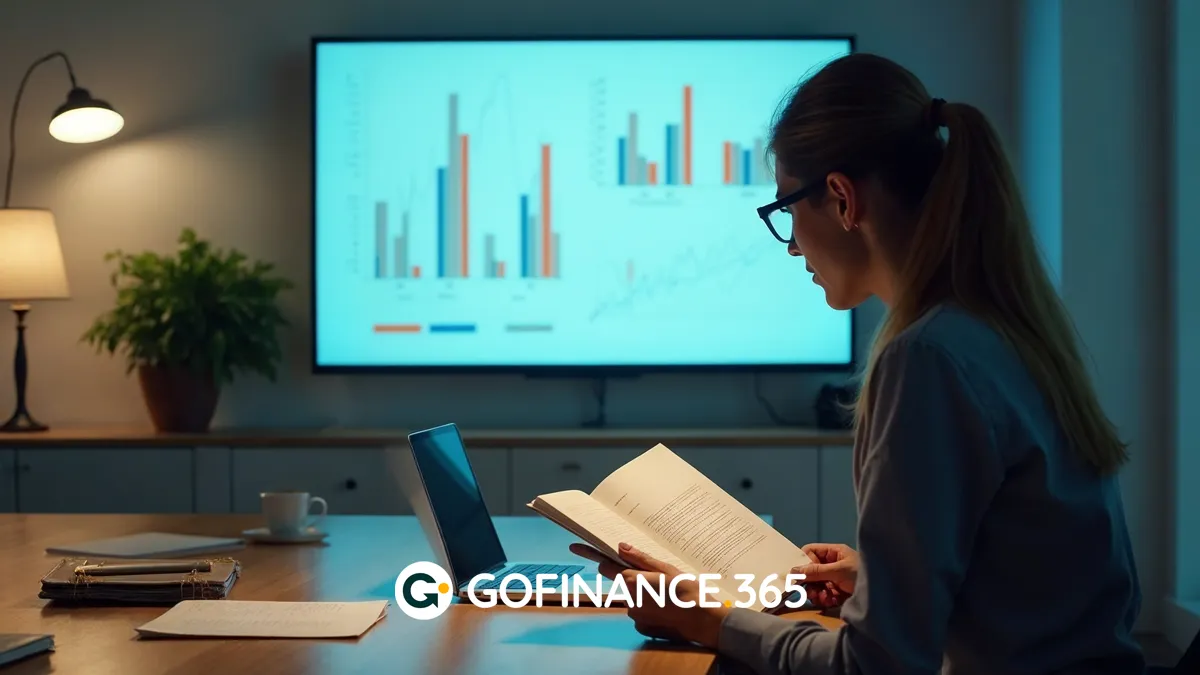Table of Contents:
Did you know that generating steady passive income is possible with a well-planned strategy? In this comprehensive guide to investing in dividends, you’ll learn what they are, how they work, and how to create a secure and growing income stream, even if you’re starting from scratch.
Investing in dividends is the most realistic way to build financial freedom without relying on a lifetime of active work. Next, discover how to apply this strategy with confidence and avoid the most common mistakes. Are you ready?
What are dividends and how do they work?
Dividends are payments made by companies to their shareholders as a distribution of profits. They represent a proportional share of the company’s earnings and can be paid quarterly, semi-annually, or annually. The amount depends on each company’s dividend policy and financial results.
When you invest in stocks that pay dividends, you earn passive income simply by owning those stocks. This makes them an essential pillar for investors looking to generate stable cash flow, supplement their salary, or live off their investments in the future.
Types of dividends: cash, stock, and special
There are three main types of dividends:
- Cash dividends: these are the most common. The company transfers the money directly to your brokerage account, in proportion to the number of shares you own.
- Stock dividends: instead of money, you receive additional shares. This increases your ownership without you having to invest more capital.
- Special dividends: one-off payments, usually when the company has extraordinary profits or significant asset sales.
Each type has different tax and strategic advantages, so it is worth analyzing them according to your investment objectives.
Advantages of investing in dividend-paying stocks
Investing in dividends generates passive income and also strengthens your overall financial strategy. It is a key tool for any disciplined investor.
In addition, historically, companies that pay dividends have better long-term stability and profitability than those that do not. This approach balances your portfolio and reduces dependence on price appreciation.
Generating steady passive income
Dividends allow you to receive regular cash payments without having to sell shares. This means you don’t reduce your wealth and, at the same time, you gain liquidity to reinvest, cover expenses, or enjoy yourself without touching your initial investment.
Long-term growth potential and compound effect
Reinvesting dividends accelerates your growth thanks to compound interest. For example, if you receive €100 in dividends and reinvest it in more shares, each year you will receive dividends from a growing capital, creating a snowball effect that multiplies your income in the long term.
Lower volatility and portfolio stability
Companies that pay dividends tend to be well-established, with stable revenues and good cash flow. This reduces the volatility of their shares and offers greater security to investors, especially in times of economic uncertainty.
How to start investing in dividends step by step
Investing in dividends requires planning and discipline. It’s not about buying any stock that pays dividends, but about building a sustainable strategy tailored to your goals.
Below, we share a clear step-by-step guide to help you take your first steps on this path to financial freedom.
Define your financial goals and investment horizon
Before choosing stocks, ask yourself: Why do I want this passive income? Retirement, reinvestment, or monthly expenses? Also, define your time horizon: short, medium, or long term. This will determine whether you prioritize immediate high dividends or sustained growth.
Determine your risk profile and dividend strategy
Assess your risk tolerance. If you are conservative, prioritize companies with stable dividends, low volatility, and sustainable payout ratios. If you are more risk-tolerant, you can include companies with high dividend growth, even if their current payout is lower.
Open an account with a reliable, low-fee broker
Select an online broker that offers:
- Low commissions for purchases and dividend payments.
- Access to international markets (mainly the US and Europe).
- A solid reputation and intuitive platform.
Risks and considerations when investing in dividends
Although dividends are a great passive income strategy, they are not without risks. It is important to understand and manage these risks to avoid costly mistakes.
In addition, planning your taxes correctly maximizes your net income and optimizes the long-term growth of your portfolio.
Risk of dividend cuts or eliminations
A company may reduce or eliminate its dividends if its financial situation becomes difficult. Therefore, always analyze:
- Payout ratio (preferably between 40% and 70%).
- Free cash flow and earnings stability.
- History of growing dividends.
Risk of concentration in a single sector or company
Investing all your capital in a few stocks or a single sector exposes you to excessive risk. Diversify across several sectors (energy, healthcare, consumer staples, telecommunications) and companies to protect your dividend stream.
Invest in dividends and earn monthly passive income
Now that you have a thorough understanding of how to invest in dividends to generate steady passive income from stocks safely, it’s time to take your first step today.
With a solid strategy and consistency, you’ll achieve financial freedom sooner than you think. Go for it!
Frequently asked questions about dividend investing
In this section, we will answer the most common questions so that you can start your dividend strategy with confidence and clarity. Let’s get started!
How much money do I need to live off dividends?
It depends on your monthly expenses and the average return on your stocks. For example, if you need $1,000/month and your portfolio yields 4% net per year, you will need $300,000. This is an achievable goal with discipline and consistent reinvestment.
Is it better to invest in growth stocks or dividend stocks?
Both strategies are valid. Growth stocks appreciate in value, while dividends generate immediate cash flow. Ideally, you should combine both depending on your time horizon and financial needs.
What is the best strategy for long-term dividends?
Invest in solid companies with a history of growing dividends, automatically reinvest payments, and diversify across sectors. Discipline and the compound effect will do the rest over the years.















